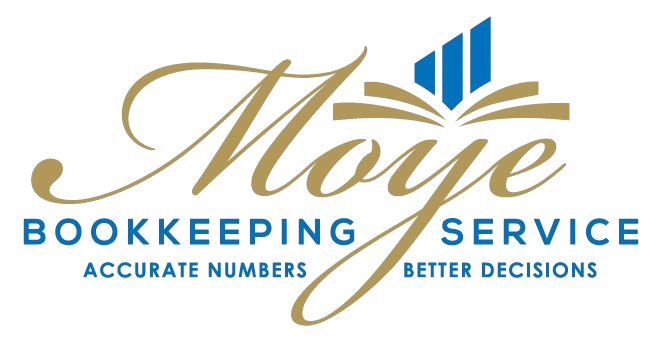Affiliate Disclosure: Please note that this post may contain affiliate links. If you click on a link and make a purchase, we may earn a small commission at no extra cost to you. Thank you!
What to do after college graduation? A throbbing question on the minds of many. Stepping off the stage with your diploma feels like a victory—until reality hits. The job market is tougher than ever, and student loans loom like storm clouds. If you’re holding $31,000 in debt (the national average), the excitement of finishing college can quickly turn to stress.
Christine Benz, a leading financial expert, notes how recent graduation milestones were upended by economic uncertainty. Whether you missed walking the stage or landed a role in a shaky industry, one thing’s clear: financial stability starts with a plan.
This financial tips for graduates cuts through the noise. Instead of vague advice, you’ll get actionable steps to tackle debt, build savings, and make smart money moves—even in unpredictable times.
1. Create a Realistic Budget to Manage Your Money
Budgeting isn’t glamorous, but it’s the foundation of financial freedom. A Sallie Mae study shows parents cover 54% of college costs—now it’s your turn to take charge. Start by understanding where your money goes, and you’ll avoid surprises. Here is a budget planner that you can start up with, it helps you to keep track of your income and expense.
Calculate Your Monthly Net Income
Your take-home pay isn’t your salary. Subtract taxes, healthcare, and retirement contributions from gross income. For example, a $4,000 paycheck might shrink to $3,200. Apps like Mint automate this math.
Track and Categorize Your Expenses
That $7 latte adds up. Use apps like EveryDollar to spot spending patterns. Label expenses as fixed (rent, loans) or variable (dining out). After three months, you’ll see the truth.
Use the 50/30/20 Rule for Balanced Spending
Split your net income: 50% for needs (rent, groceries), 30% for wants (travel), and 20% for savings or debt. On $3,500/month, that’s $1,750 for essentials, $1,050 for fun, and $700 for future you. You can use a saving method of your choice even Cash envelopes.
“A budget tells your money where to go instead of wondering where it went.”
Skip guesswork. Tools and rules turn chaos into control. Your budget isn’t a restriction—it’s your roadmap.
2. Tackle Student Loan Debt Strategically
Student loans don’t have to control your life—if you handle them wisely. The average monthly payment is $391, but with the right plan, you can pay less or even qualify for forgiveness. Start by understanding your options.
Know Your Loan Types and Repayment Plans
Federal loans offer flexible options private loans don’t. Compare these key differences:
- Federal loans: Income-driven repayment (IDR) caps payments at 10–20% of your income. Some jobs qualify for forgiveness after 10 years.
- Private loans: Fixed terms. Refinancing is often the only way to lower rates.
Keep Payments Below 15% of Your Income
If you earn $4,000/month, aim for $600 or less toward debt. Exceeding this strains your budget. Use the Federal Loan Simulator to test scenarios.
“Deferring payments feels easier now, but unpaid interest piles up fast. Even small payments help.”
Refinance High-Interest Loans
For private loans, refinancing cuts costs. Dropping a $30,000 loan from 9% to 6% saves $45/month. Bonus: Many lenders give 0.25% discounts for autopay.
Tip: Federal loans lose protections if refinanced privately. Weigh the trade-offs.
3. Build an Emergency Fund for Financial Security (Click Here for How to build Emergency fund on a tight budget)
Your first flat tire shouldn’t send you into debt—that’s what emergency funds fix. Christine Benz, a top financial strategist, urges grads to prioritize this buffer. Without it, a single setback can spiral into credit card debt or missed rent.
Start Small with $1,000
Begin with a $1,000 goal. Use cash gifts from graduation or cut back on dining out. This covers minor crises like a phone repair or vet bill. Apps like Qapital round up purchases to grow your fund painlessly.
Grow It to 3–6 Months of Living Expenses
Next, aim for 3–6 months’ worth of living expenses. Calculate basics: rent ($2,500) + groceries ($600) + utilities ($200) = $9,900 for three months. High-yield savings accounts (like Ally’s 4.25% APY) help money grow faster than traditional banks.
“An emergency fund isn’t luxury—it’s survival. Start before you think you need it.”
Keep Funds in a Liquid Account
Access matters. Use a liquid account like CIT Bank (4.65% APY) for instant withdrawals. Avoid locking cash in CDs or risking it in stocks. Compare yields: $10,000 earns $465/year at CIT vs. $1 at Chase.
- Priority order: Cover medical deductibles first, then job loss risks.
- Warning: Roth IRAs aren’t ideal—market dips could shrink your safety net.
4. Get Insured to Protect Your Future
Accidents happen—but being uninsured turns small setbacks into financial disasters. With 26% of young adults uninsured (CDC), skipping coverage risks bills you can’t afford. Smart policies shield your health, car, and belongings without breaking the bank.
Prioritize Health Insurance (Even If You’re Healthy)
Going without health insurance costs more than you think. The ACA penalty hits $700+/year—enough to cover 4 months of a basic plan. Compare options:
- HDHPs: Lower premiums ($150/month) but higher deductibles ($5,000). Ideal if you rarely visit doctors.
- PPOs: Higher costs ($250/month) but better coverage. That $5,000 appendectomy might cost you only $500.
72% of employers offer health plans (BLS data). If yours does, enroll—even if you’re healthy. A broken arm averages $2,500 without coverage.
Choose the Right Auto Insurance Coverage
State-minimum liability saves $30/month but leaves you vulnerable. Full coverage costs more but handles:
- Your car’s repairs after a hit-and-run
- Medical bills if you’re at fault
Example: A $100/month full-coverage plan beats paying $8,000 out-of-pocket for a fender bender.
“Insurance is the only product you buy hoping to never use—until you desperately need it.”
Consider Renters Insurance If You’re Leasing
Your landlord’s policy won’t cover stolen laptops or flooded home offices. For $15/month (Lemonade), a renters policy replaces:
- $3,000 in electronics
- $1,500 in damaged furniture
Tip: Bundle with auto insurance for 10% discounts. That’s $60/year back in your pocket.
5. Start Investing Early for Long-Term Growth
Time is your biggest ally when building wealth—start investing now. A $1,000 initial deposit plus $100/month at 7% growth becomes $280,000 in 40 years. The sooner you begin, the less you’ll need to save later.
Take Advantage of Employer 401(k) Matching
If your employers offer a 401(k) match, contribute enough to get the full benefit. On a $50,000 salary with a 4% match, that’s $2,000 in free money yearly. Skip this, and you’re leaving cash on the table.
Open a Roth IRA for Tax-Free Retirement Savings
Roth IRAs let your investments grow tax-free. Unlike Traditional IRAs, you pay taxes now (at your current lower rate) and withdraw tax-free later. Max it out at $6,500/year—future you will thank you.
“The stock market is a device to transfer money from the impatient to the patient.”
Invest in Low-Cost Index Funds or ETFs
Vanguard’s S&P 500 ETF (VOO) has a 0.03% fee and returned 62% over 5 years. Avoid flashy funds like ARKK (-38% in the same period). Start with $100 via apps like M1 Finance—no $10,000 minimums required.
- Diversify: Spread risk across sectors (tech, healthcare, energy).
- Automate: Set recurring deposits to stay consistent.
- Ignore noise: Market dips are normal; focus on decades, not days.
6. Monitor and Build Your Credit Score
Your credit score is like a financial report card—it follows you everywhere. A high score unlocks lower interest rates on loans, better apartment approvals, and even job opportunities. Start managing it now to avoid costly mistakes.
Pay Bills on Time and Keep Credit Utilization Low
Payment history impacts 35% of your score. Set autopay for bills to avoid late fees. For credit cards, keep balances below 30% of your limit. Example: A $5,000 limit means a $1,500 max balance.
Check Your Credit Reports Annually
Errors hurt your score. Use AnnualCreditReport.com for free reports from Equifax, Experian, and TransUnion. Dispute mistakes with CFPB template letters—it’s faster than calling.
“A 100-point score drop could cost you $40,000 extra on a mortgage. Monitor like your wallet depends on it.”
Avoid Closing Old Credit Cards
Closing a 10-year-old card shortens your account history, lowering your score. Even unused cards help your Average Age of Accounts (AAoA). Keep them open with a small recurring charge.
- Boost your score: Use Experian Boost to count utility payments.
- Free monitoring: Credit Karma tracks your VantageScore weekly.
7. Set Financial Goals to Avoid Lifestyle Creep
Financial success isn’t just about earning more—it’s about keeping more of what you earn. Lifestyle creep happens when extra income gets spent instead of saved. With a plan, you can enjoy raises and build wealth.
Define Short-Term and Long-Term Objectives
Use SMART goals to stay focused:
- Specific: “Save $8k emergency fund” beats “save more”
- Measurable: Track $666/month transfers
- Time-bound: 12-month deadline creates urgency
Tip: Ally Bank’s “buckets” let you organize savings for different goals in one account.
Save Half of Every Raise or Bonus
When your paycheck grows, your spending shouldn’t match it. Example:
- $5,000 annual raise = $208/month extra
- Save $104 (50%), spend $104 guilt-free
This balances enjoyment with progress. That promotion from Honda to BMW can wait.
“Automated savers are 3x more likely to hit targets than those relying on willpower alone.”
Automate Savings to Stay Disciplined
Set up recurring transfers for:
- Emergency funds (priority)
- Sinking funds (vacations, gifts)
- Investments (Roth IRA, brokerage)
- Acorns
Your future self will thank you when money grows without daily effort.
8. Graduate—Now What? 7 Financial Steps Every New Grad Should Take
Taking control of your financial life after college might feel overwhelming, but small steps today lead to big wins tomorrow. The habits you build now set the stage for long-term success. Let’s break down the essentials of how to manage money after college.

Master the 7-Step Financial Blueprint
Follow this proven roadmap to stay on track:
- Budget smartly: Track every dollar to avoid overspending.
- Crush debt: Prioritize high-interest loans first.
- Save for emergencies: Aim for 3–6 months’ expenses.
- Get insured: Protect against unexpected costs.
- Invest early: Even $100/month grows over time.
- Boost credit: Pay bills on time, keep balances low.
- Set goals: Define what financial freedom looks like for you.
Why Starting Early Makes All the Difference
Compound growth works magic when you begin young. A 25-year-old investing $300/month at 7% will have $1.1 million by 65—more than a 35-year-old saving $600/month. That’s the power of time.
“Comparison steals financial joy—focus on your personal benchmarks.”
Waiting just 10 years to start saving for retirement cuts potential gains in half. For example, $10,000 invested at 25 grows to $76,000 by 65, while the same amount at 35 reaches only $38,000.
Take Action This Week
Don’t let momentum fade. Within 30 days of graduation or starting a job:
- Enroll in employer benefits like 401(k) matches
- Set up automatic transfers to savings and investments
- Review your student loan repayment options
Your future self will thank you for these small but powerful steps today.
9. Optimize Your Housing and Transportation Costs
Your biggest monthly expenses—housing and transportation—can make or break your budget. Smart choices here free up cash for debt payments or travel. Start with these rules to keep costs in check.
Limit Rent to 30% of Your Income
Spending more than 30% of your take-home pay on rent strains your budget. Example:
- $4,000 monthly income → $1,200 max rent
- $2,500 income → $750 limit
Tip: Use Zillow’s affordability calculator to compare neighborhoods.
Consider Roommates or Living at Home Temporarily
46% of 24–35-year-olds live with parents (Zillow). Other options:
- Split a 2BR: $3,000 rent becomes $1,500/person vs. $2,000 for a 1BR alone.
- Short-term sacrifice: 6 months at home could save $9,000 for emergencies.
“Roommates cut housing costs faster than any other strategy—just vet them carefully.”
Keep Transportation Costs Under 15% of Your Budget
A $300 car payment + $150 insurance = 18% of a $2,500 income. Trim costs:
- Buy used: A 2018 Honda Civic ($17k) saves $8k vs. a 2023 model.
- Bike or transit: $100/month vs. $450 for a car.
- Track mileage: IRS’s 65.5¢/mile rate helps gig workers deduct expenses.
Pro tip: Refinance auto loans if rates drop—even 1% saves $20/month on a $20k loan.
10. Develop Smart Spending Habits
Small daily spending choices shape your financial future more than you think. A $5 coffee or $15 lunch might seem insignificant, but these habits drain your wallet over time. With the right strategies, you can cut costs without sacrificing joy.
Cook at Home to Save on Food Costs
Eating out averages $13 per meal (USDA), while home-cooked meals cost $4–6. Example:
- Meal prep: $75 weekly groceries vs. $25/day takeout saves $525/month.
- Batch cooking: Freeze portions to avoid last-minute delivery orders.
Tip: Use apps like Mealime for budget-friendly recipes.
Limit Discretionary Spending to 10–20% of Income
Fun money should fit your budget. If you earn $3,000/month:
- Allocate $300–600 for hobbies, dining, or shopping.
- Use the 24-hour rule for impulse buys over $100.
“Budgeting isn’t restriction—it’s designing a life you love within your means.”
Use Sinking Funds for Planned Expenses
Avoid debt by saving gradually for irregular costs. Examples:
- Annual subscriptions: Save $50/month for a $600 Amazon Prime renewal.
- Car maintenance: Set aside $100/month for oil changes or tires.
Tools like YNAB’s envelope system automate this process.
11. Invest in Yourself Through Continuous Learning
A $500 certification today could mean a $10,000 raise next year. In a competitive job market, skills trump seniority—AWS certifications deliver 27% salary bumps. Whether you pursue formal education or online courses, upgrading knowledge pays faster than most investments.
Pursue Certifications or Advanced Degrees
Not all credentials are equal. Focus on high-ROI options:
- PMP certification: Costs $5,000 but boosts salaries by $15,000/year (PMI data).
- Google Career Certificates: $49/month for in-demand tech skills.
- Freelancing niches: Top 10% on Upwork earn $100+/hour (2023 data).
- You can also use platform like Fiverr for Freelance and to find other freelancers who can provide you with ideas and products.
Leverage Employer Tuition Assistance Programs
56% of employers reimburse education costs (SHRM). Negotiate terms like:
- “Company covers 75% for A-grades.”
- “Repayment waived if I stay 2+ years.”
Example: Starbucks pays 100% for Arizona State University online degrees.
“The most successful professionals treat learning like compound interest—small, consistent deposits create massive growth.”
Prioritize Skills That Boost Earnings Potential
Focus on abilities with tangible payoffs:
- Data analytics: SQL/Python skills command 20% premiums.
- AI prompt engineering: Fastest-growing freelance skill (Upwork).
Use LinkedIn Learning’s free trial to test courses before committing. Your financial life improves when knowledge becomes income.
12. Negotiate Your Salary and Benefits
Your paycheck isn’t set in stone—it’s a starting point. Pay scale data shows 70% of professionals who ask for raises get them. Whether you’re starting a new job or aiming higher in your current role, strategic negotiation can boost your income by thousands.

Research Market Rates for Your Role
Knowledge is power in salary talks. Use Glassdoor’s salary tool to compare pay for your position in your zip code. Example:
- Marketing Coordinator: $45k national average vs. $52k in San Francisco
- Software Engineer: $85k base + $15k bonuses common at mid-size firms
Tip: Adjust for experience—add 5–10% for each relevant certification.
Evaluate Total Compensation (Not Just Salary)
Base pay is just one piece. For someone in the 30% tax bracket, a 401(k) match often beats a raise. Compare these packages:
- Option A: $60k salary with 3% 401(k) match ($1,800 value)
- Option B: $62k salary with no match
Other perks matter too—remote work saves $5k/year on commuting. Student loan assistance ($100/month) equals $1,200 extra annually.
“Employers expect negotiation—it shows you know your worth. The worst they can say is no.”
Ask for Raises and Promotions Proactively
Timing and proof drive success. Follow this approach:
- Quantify wins: “Grew web traffic 40%” beats “Improved marketing”
- Pick moments: Ask after big projects or during budget planning
- Practice scripts: “Given these results, I’m requesting a 10% adjustment”
Remember—the average raise is 3–5%, but top performers often get 8–12%.
Conclusion: Take Control of Your Financial Future Today
The clock is ticking on your biggest financial advantage: time. Christine Benz’s insight rings true—how you allocate your years matters more than stock picks. With Fidelity reporting only 45% of millennials are ready for retirement, starting now is non-negotiable.
Here’s why urgency pays: $300/month invested at 25 could let you retire at 55. Wait until 35, and you’ll need $600/month for the same result. Inflation makes delays costlier—a $50,000 goal today requires $85,000 in 20 years at 3% inflation.
Your next steps:
- Open a Roth IRA—even $50/month grows tax-free.
- Maximize employer 401(k) matches—it’s free money.
- Schedule a student loan consult—IDR plans cut payments.
You aced finals. Now apply that focus to your financial future. Download Motley Fool’s free “7 Money Moves Before 30” guide—your roadmap starts today.




